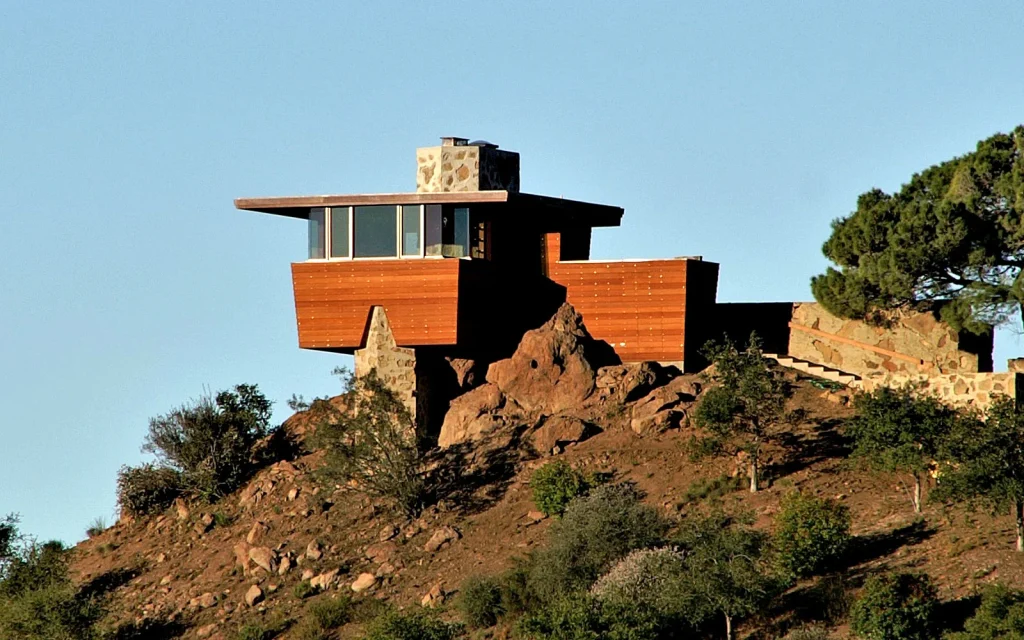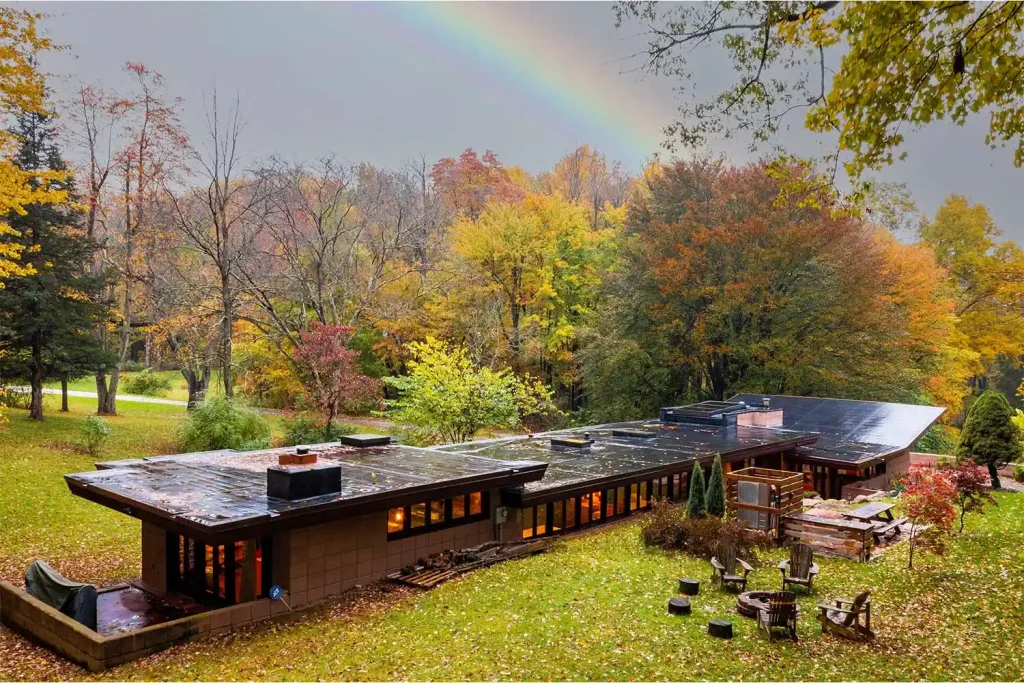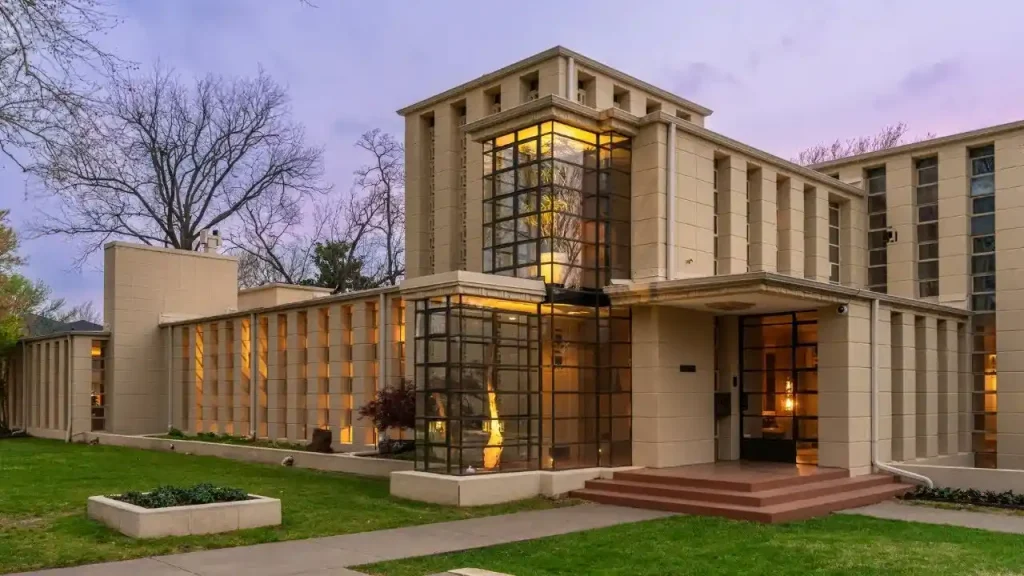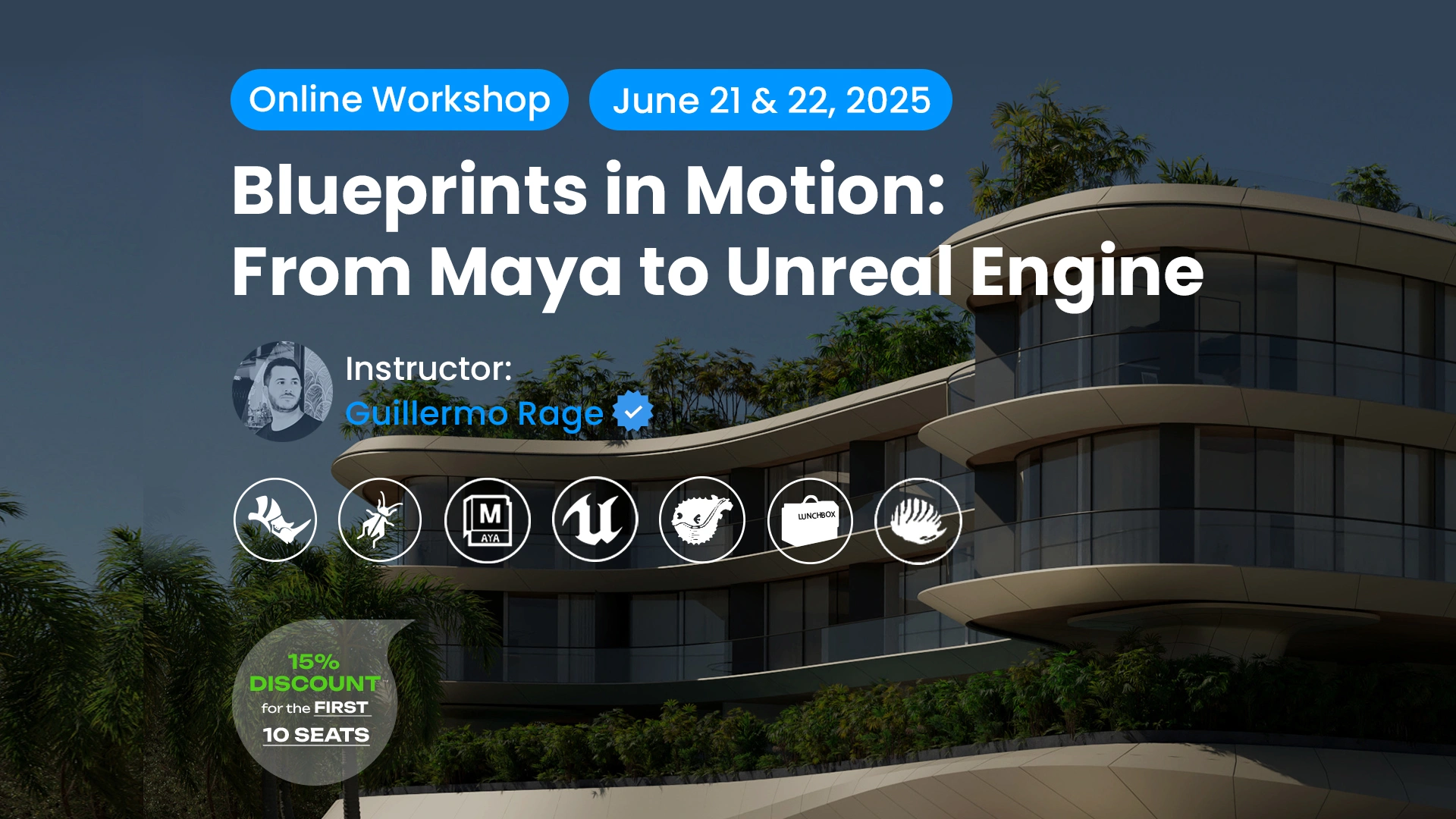Frank Lloyd Wright, an American architect, designer, writer, and educator, is considered one of the greatest architects of all time. Wright produced a wide range of work, around 1,000 structures, about 400 of which were built. He influenced many architects and also philosophical discussions. This philosophy was exemplified in Fallingwater, which he designed in the 1930s.
“As we live and as we are, Simplicity – with a capital “S” – is difficult to comprehend nowadays. We are no longer truly simple. We no longer live in simple terms or places. Life is a more complex struggle now. It is now valiant to be simple: a courageous thing to even want to be simple. It is a spiritual thing to comprehend what simplicity means.”
Frank Lloyd Wright, The Natural House
Recently, many of Frank Lloyd Wright’s works have been opened to the public for visitation, and his private house projects are still actively used by families or individuals. The Frank Lloyd Wright Building Conservancy has recently listed 7 of his works. Here is an overview of these listed structures. Perhaps you can even own a house designed by Wright.
Norman Lykes House
Location: Phoenix, AZ
Year Designed: 1959
Price: $8,950,000
The house is currently listed for co-ownership with six people. Frank Lloyd Wright-designed the Circular Sun House in 1959 for Norman and Aimee Lykes. It has three bedrooms, an office, a den, and a library.
“This circular home with rounded windows and walls, custom built-in furniture, and a crescent-shaped pool is perched on a mountain overlooking Phoenix with a 180-degree view from the living room. Spectacular inside and out, yet noticeably calming, its curves follow the mountain backdrop,” said Anne Stupp, Frank Lloyd Wright Foundation Board of Trustees.
Fawcett House
Location: Los Banos, CA
Year Designed: 1955
Price: $3,700,000.00
The property sits on 76 acres of land in California’s Central Valley. Arthur Dyson, Architect, spearheaded the house’s restoration in 2012, working closely with Lynn Fawcett Whiting, the owner’s daughter. Additionally, architect Eric Lloyd Wright, the grandson of Frank Lloyd Wright, and Frank Lloyd Wright’s interior designer for the home, Cornelia Brierley, were also involved in the restoration process.
Near the entrance, a shallow, circular flower planter is on top of one of the walls, a feature more commonly seen in Wright’s designs from 50 years earlier. Randall “Buck” and Harriet Fawcett encountered Wright while taking an architecture class at Stanford University.
Eppstein House
Location: Galesburg, MI
Year Designed: 1948
Price: $2,100,000
The Eppstein House, designed by Wright in 1948 and situated in “The Acres”, Galesburg, Michigan, is currently on the market. This mid-century residence has been fully renovated and is also open for overnight accommodation. A previous owner renovated the kitchen, which features a high ceiling and a skylight. On an unusual circular site stands the Eppstein House, a long and low structure. Wright planned the Usonian-style dwelling to be built using his distinctive textile blocks.
Marika Broere said, “After 20 years of neglect, the Eppstein House – one of Frank Lloyd Wright’s Usonian homes – is now restored from top to bottom to its former glory. This is a unique opportunity to call an architectural gem your own for a few days or longer. The house contains original Frank Lloyd Wright furniture, along with other rare furniture and art pieces from the same time period.”
We interviewed Marika Broere and Tony Hillebrandt, the couple responsible for the restoration of Wright’s Eppstein House.
Winn House
Location: Kalamazoo, MI
Year Designed: 1950
Price: $1,300,000.00
Winn House was completed in 1950, the last house designed by Wright built in the neighborhood. It features Wright’s hallmark open floor plan, expansive windows, and custom-built furniture. The house’s curving main facade follows the site’s sloping topography. The residence features three bedrooms, two and a half bathrooms, a patio and porch, a fireplace, and a glazed balcony.
Hickox House
Location: Kankakee, IL
Year Designed: 1900
Price: $779,000.00
The Hickox House is recognized as one of Wright’s earliest Prairie-style creations. It showcases flared roof ridges reminiscent of Japanese architecture and geometric patterns. The entryway is spacious, well-lit, and welcoming, and it is accompanied by built-in seating designed by Wright. Leaded glass bands run across the bay windows on the first floor, seamlessly integrating the interior with the natural surroundings.
The design is influenced by several articles written by architects. The interior is adapted from “A Home in a Prairie Town,” while the exterior is based on “A Small House with Lots of Room in It.” The exterior walls are finished with white plaster and adorned with stained woodwork. Also, the interior walls are also plastered with a sand finish.
Richard Lloyd Jones House
Location: Tulsa, OK
Year Designed: 1929
Price: $4,500,000.00
The house was initially designed for Jones’s family in Tulsa, Oklahoma. The finished home is unlike any other by Wright. Alternating columns of block and glazing break down the solidity of the exterior walls, and a mottled light illuminates the interior. The exterior is punctuated by several glazed, two-story elements that telescope from the main walls.
The home has five bedrooms and five baths. After Jones died in 1963, his widow traded houses with M. Murray McCune, a Tulsa architect who updated Richard Lloyd Jones House in 1965. The house is one of only three Wright structures in Oklahoma.
Site of Oboler Estate

Location: Malibu, CA
Year Designed: 1940
Price: $7,450,000
The Arch Oboler Complex was initially located at that site but burned down in the Woolsey Fire that swept through the area in 2018. Currently, The 100-acre property contains the remains of structures built by Arch Oboler, working from designs by Frank Lloyd Wright.
“The initial structure, which included a gatehouse, stable, and carport, was converted to the property’s primary living space in the mid-1940s and ’50s. This complex became known as the “Eaglefeather Compound,” after the name “Eaglefeather,” given to an unconstructed 1940 Wright design for a house for the Obolers intended for the property.” mentioned Frank Lloyd Wright Building Conservancy.



























The houses clearly not designed or constructed by Frank Loadwright they are quite climatic and mediocre ????
I have seen five of the seven homes. I guess there was a time in my life when I was just too fascinated with Mr. Wright’s works.